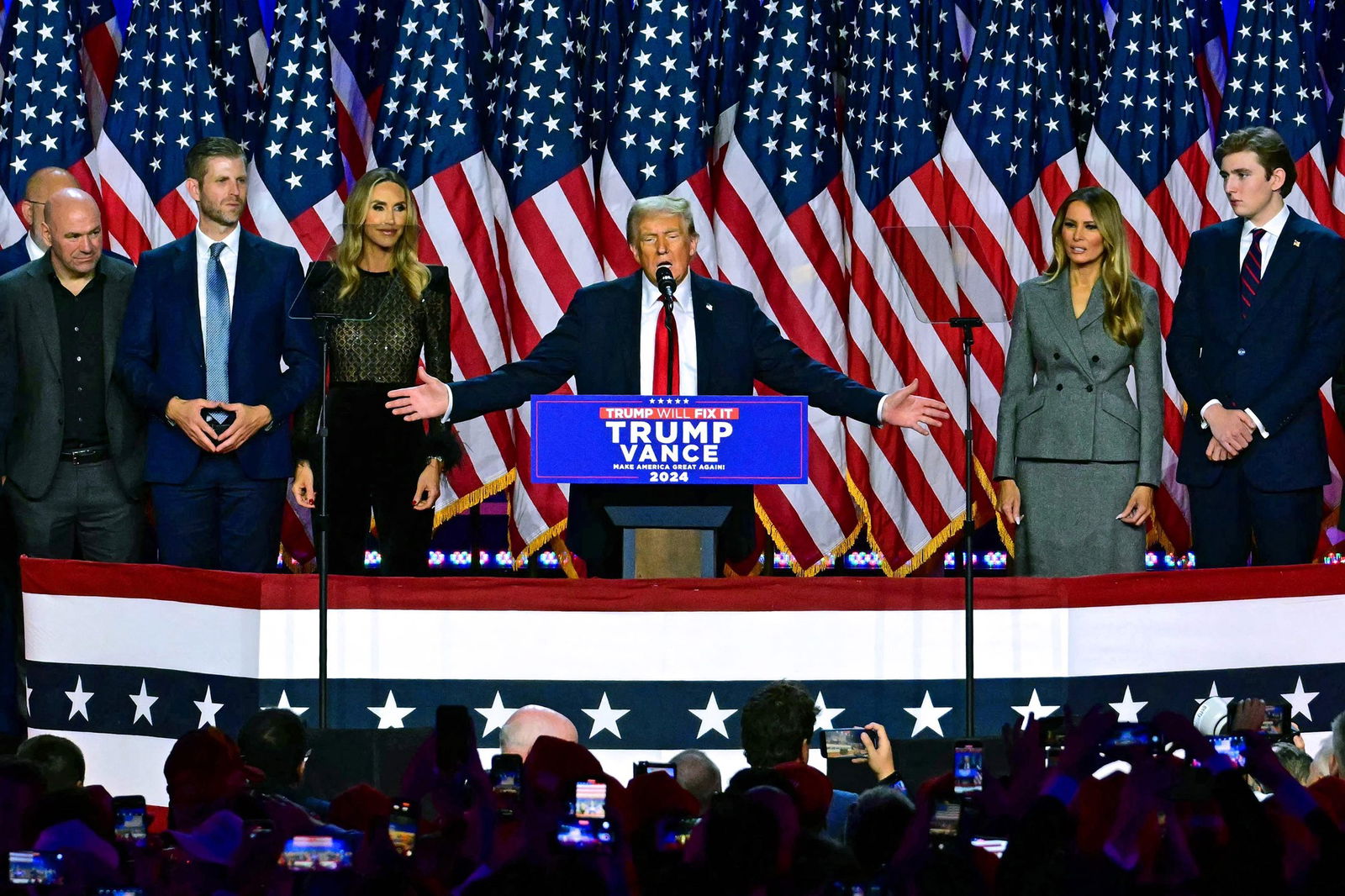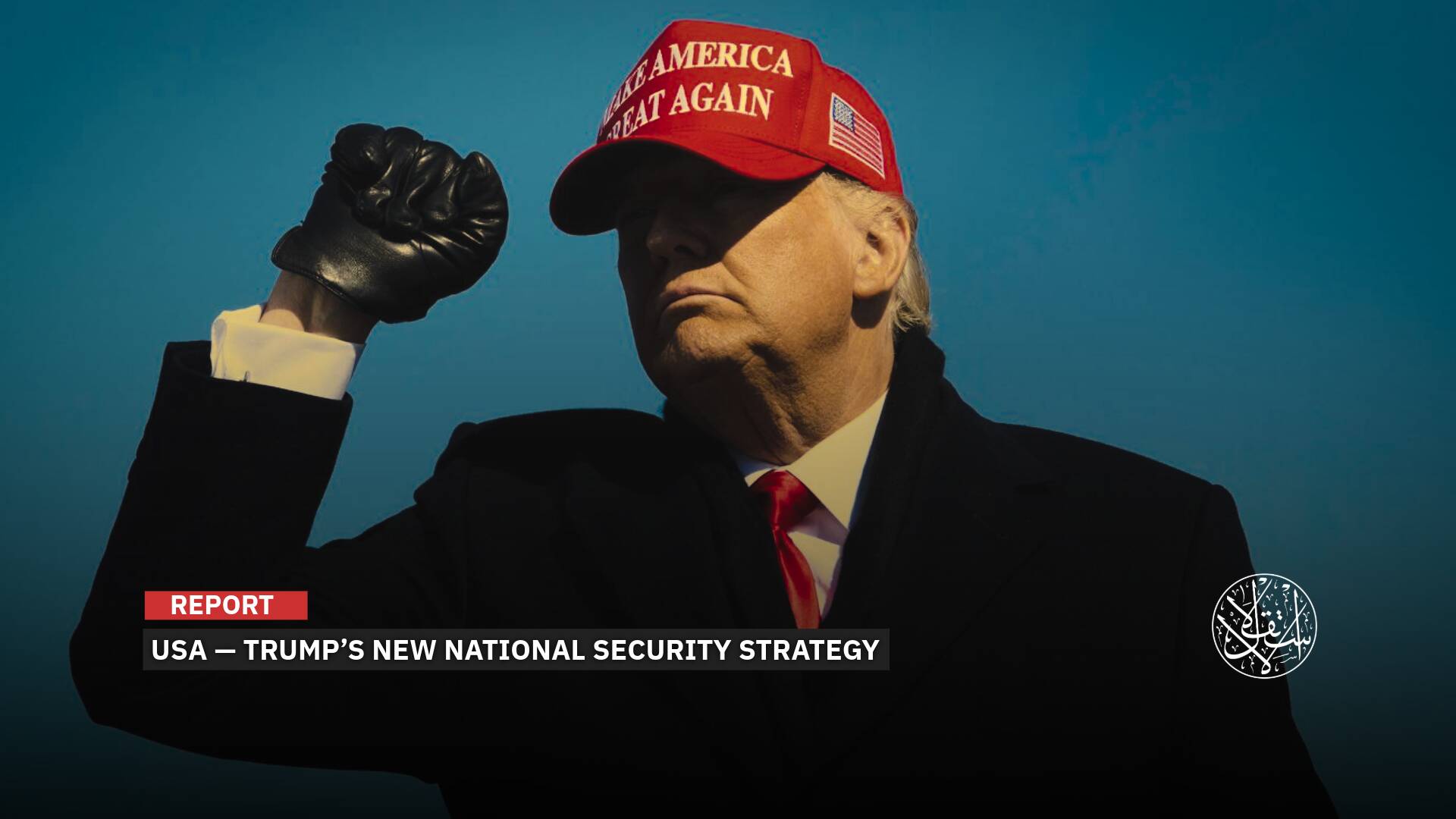How Donald Trump Won a Second Term in Historic Return to the White House

“So far, Trump has 295 of the 538 electoral college votes, compared to 226 for Harris.”
Former US President Donald Trump won the presidential race, after beating Democratic Party candidate Kamala Harris, and he thus became the nation’s 47th president.
In turn, Trump confirmed that his victory in the presidential elections gave him a strong mandate to implement the projects he promised, which represents a return to his controversial policies four years after leaving the White House.
The results showed the success of Trump's bet on the issues of the economy and immigration, and his ability to make a slight breakthrough among women and ethnic minorities in some swing states, improving his performance compared to the 2020 elections.
But Trump's victory has raised many questions about how his second presidency could reshape the world, which is engaged in deep conflicts, politically, militarily and economically.
Historic Victory
The semi-final results of the 2024 US presidential elections showed the victory of the controversial billionaire Donald Trump over his competitor Kamala Harris.
Trump received about 72.6 million votes of the total electoral votes (50.9%), compared to about 67.9 million votes for Harris (47.6%).
Trump declared his victory in the elections before the official results were received during a speech he gave to his supporters at his campaign headquarters in Florida, surrounded by Vice President J.D. Vance, Republican leaders, and members of his family.
Trump pledged to say: “This is a great victory for the American people that will allow us to make America great again.”
He described his victory in a new presidential term as a historic and political victory that the United States had never seen before.
He also devoted a few minutes of his speech to praising the owner of X platform, Elon Musk, who supported Trump's campaign with $120 million, indicating that he would appoint him to lead a government competency committee.
According to the results published by the Associated Press, Trump has 295 of the 538 electoral college votes, compared to 226 for Harris.
In contrast to the 2020 election, Trump has achieved near-total control of the seven swing states, as he has confirmed his victory in Pennsylvania, Georgia, North Carolina, and Wisconsin, and is still ahead in Nevada, Arizona, and Michigan.
The Republican candidate also won several other states, most notably Texas, Florida, Ohio, Indiana, Tennessee, Missouri, Alabama, and South Carolina.
While the Democratic candidate won the most prominent states, including California, New York, Washington, New Jersey, Illinois, Massachusetts, Hawaii, Virginia, Minnesota, Connecticut, and Illinois.

Near-Total Control
Donald Trump’s victory in the presidential election was unprecedented in the history of US presidents over the decades.
He is the first former president to return to office in more than 130 years, and - at 78 - the oldest man ever elected to the role.
Trump won despite facing four indictments, 34 criminal convictions, and two assassination attempts. No other American president in history has done this.
Republicans also gained a majority in the Senate, winning seats held by Democrats in West Virginia and Ohio.
The results indicate that Republicans now have 52 seats, while Democrats have so far gained 44 seats. The results of seven seats are still uncertain.
The result ensures that Republicans will be able to help Trump appoint conservative judges and other government employees.
However, Republicans will fall short of the 60-vote majority needed to pass most legislation in the Senate.
With some House races still yet to be called, Republicans have 209 seats and Democrats have 191. Either party needs 218 seats to have a majority.
If Republicans eventually take control of the House, they will be in a position to impose plans and help Trump fulfill his campaign promises until the 2026 midterm elections, according to Reuters.
Republicans won eight of the 11 gubernatorial races, giving them control of 27 governorships nationwide to 23 for Democrats.

Trump's Campaign
Donald Trump had focused his campaign on issues that frustrated and feared Americans about his competitor Harris's campaign, especially regarding the economy and illegal immigration.
Trump built most of his election campaign on the issue of illegal immigrants, which is one of the strong points that attracted conservative voters and independent middle-class voters, due to Harris' position related to her position as Vice President Joe Biden and the failure of that administration to address this issue.
Once again, Trump has preempted Harris by announcing the elimination of federal taxes on tips, even though the Federal Budget Committee estimated the losses at about $250 billion. However, this legislation needs Congressional approval to become effective.
Trump also pledged to his supporters to eliminate taxes on Social Security benefits for seniors, according to CBS News.
In another comparison, Trump reiterated in his only debate against Harris that he would repeal the Affordable Care Act (ACA), also known as Obamacare, which is one of the most important achievements of former Democratic President Barack Obama.
It is noteworthy that Trump repeatedly tried during his first term to repeal this law, but was unable to do so, as repealing the law requires the approval of Congress and the Supreme Court.
There is also another issue that witnessed a sharp societal division centered around the right to abortion, which was one of the pillars of Harris' campaign.
But Trump argued that his appointment of three conservative justices to the Supreme Court played a role in overturning the Roe v. Wade law that protects women's freedom to choose abortion, according to CBS News.
On its part, The Washington Post saw that Trump's achievement of a majority in the Electoral College was the result of the greater percentage of male voters in his favor, in addition to white voters, Latino voters (who are usually considered Democratic supporters), black voters, and young voters.
Trump also received more support from low-income families who have particularly felt the rise in prices since the 2020 elections, according to Edison polls.

Welcome and Concern
Trump's return to the White House was not welcomed by many world leaders, especially in Europe, but the reactions of these leaders were welcoming to the new president in form, but tinged with concern in substance.
While the leaders of the European Union and NATO were quick to welcome the US president-elect, Trump's victory raised major concerns among most of them.
French President Emmanuel Macron stressed the importance of cooperation with the United States, but while protecting European interests and values.
British Prime Minister Keir Starmer congratulated Trump on his historic election victory.
European Commission President Ursula von der Leyen also congratulated Trump on his election as President of the United States.
NATO also congratulated the US President-elect, through a post by its Secretary-General Mark Rutte on his account on X.
Turkish President Recep Tayyip Erdogan, in turn, congratulated Donald Trump, adding that with Trump's election, a new era begins and that he hopes Trump will strengthen relations between Ankara and Washington.
The Israeli Occupation’s leaders were quick to congratulate Trump on his success in the election race, and Israeli Prime Minister Benjamin Netanyahu was among the first to congratulate him.
In the Arab world, most leaders welcomed Trump's return to power, and expressed their aspirations for more cooperation in economic and security issues.

As for Washington's opponents, the Kremlin spokesman said that he was not aware of any intention by Russian President Vladimir Putin to congratulate US President-elect Donald Trump on his election victory.
The Chinese Foreign Ministry expressed its hope for peaceful coexistence with the United States, while Chinese President Xi Jinping later congratulated Donald Trump, calling for strengthening dialogue and communication between the two countries.
It is noteworthy that Trump had promised during the election campaign to exert pressure on China in several areas, most notably imposing a 60% customs duty on all US imports of Chinese products.
On its part, the Iranian Foreign Ministry said that the US elections are an opportunity to reconsider the wrong US policy.
Trump’s first term in office saw an unprecedented escalation with Tehran, starting with the US withdrawal from the nuclear deal in 2018, and ending with the assassination of Qasem Soleimani, commander of the IRGC Quds Force.
Sources
- CNN - Election Center 2024
- Donald Trump wins presidential election, defeating Harris to retake White House
- Here are the campaign promises Trump and Harris have made to voters
- Trump's returning to the White House. Here's how the world reacted.
- Trump and Harris' views on abortion and IVF access, explained













